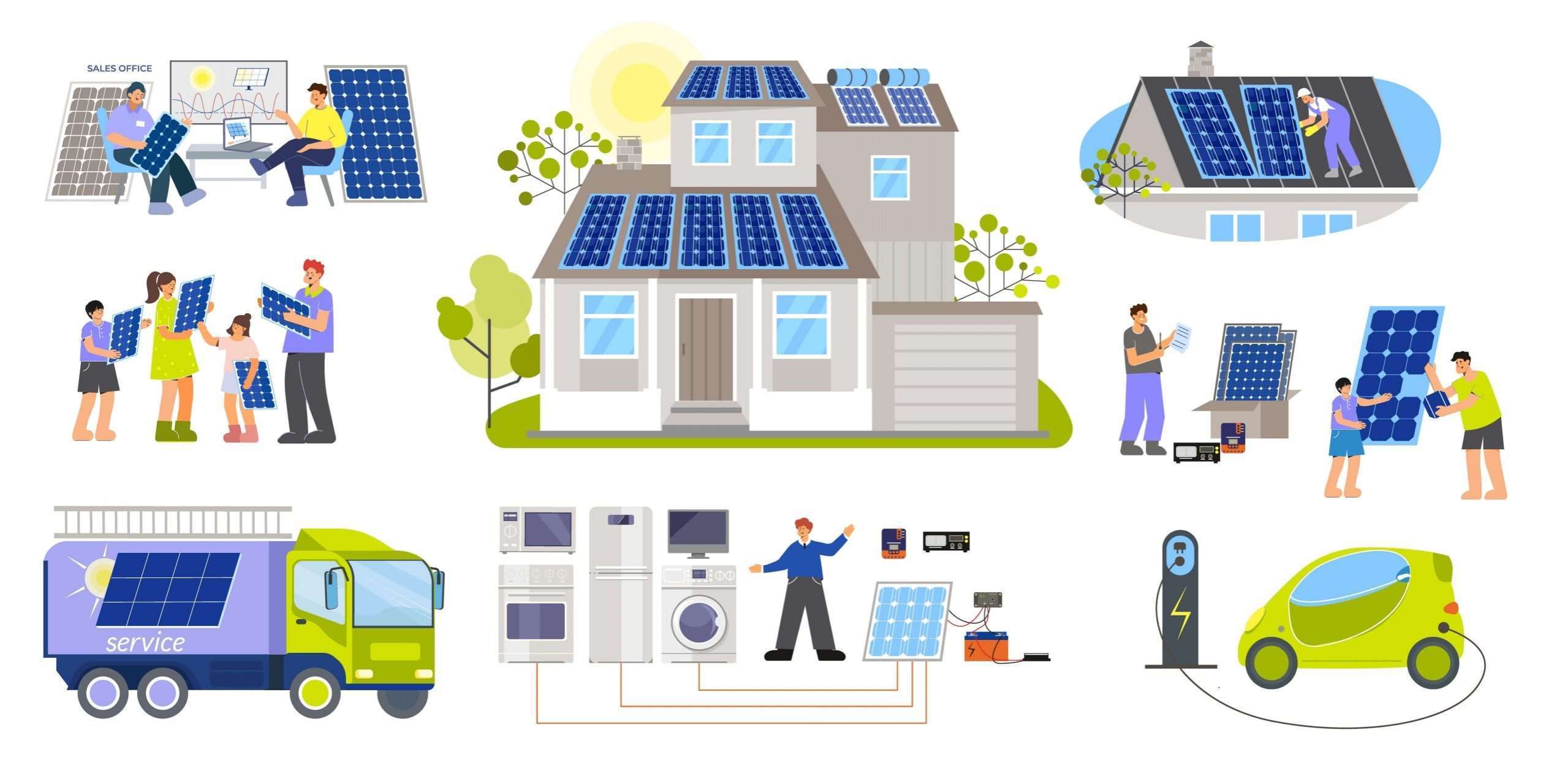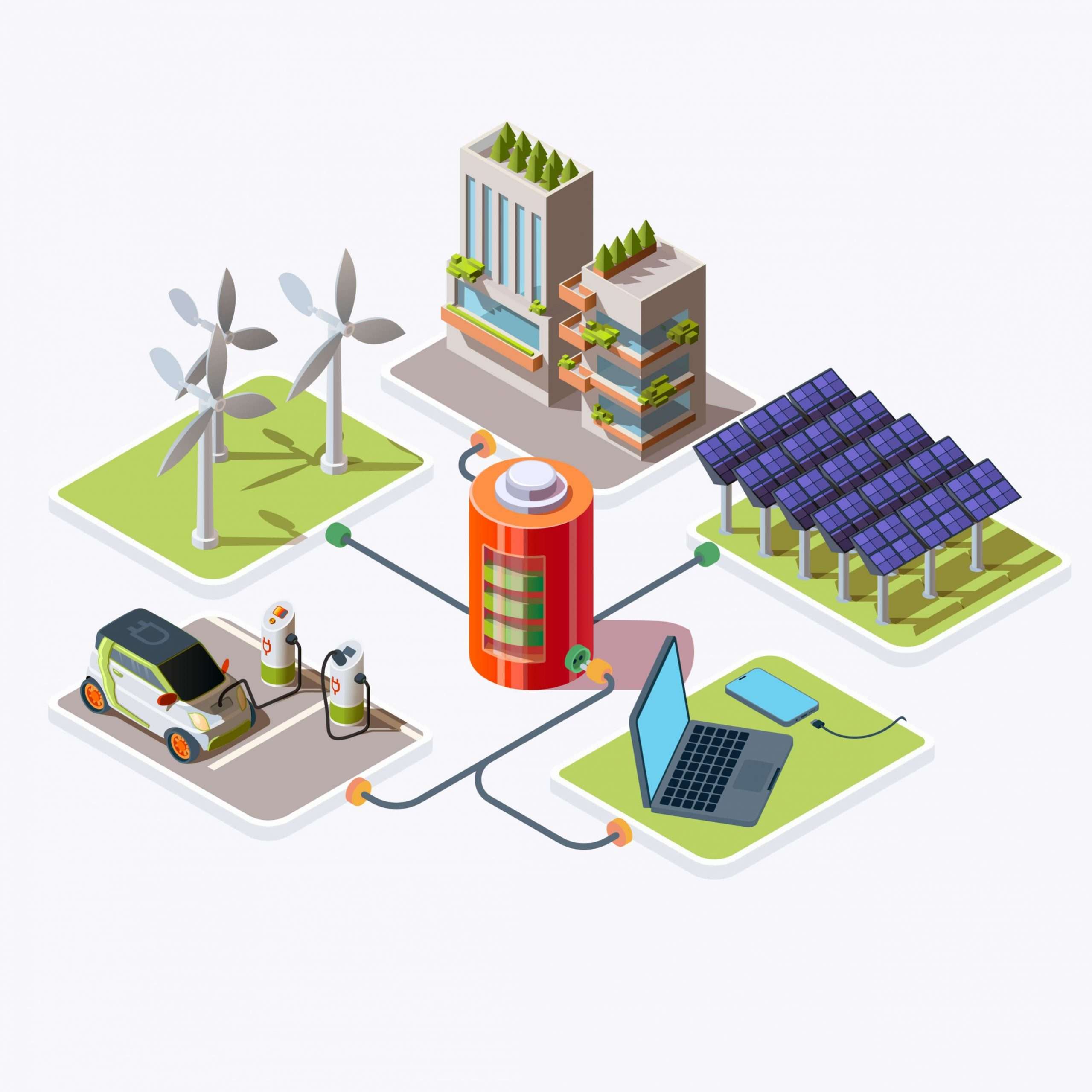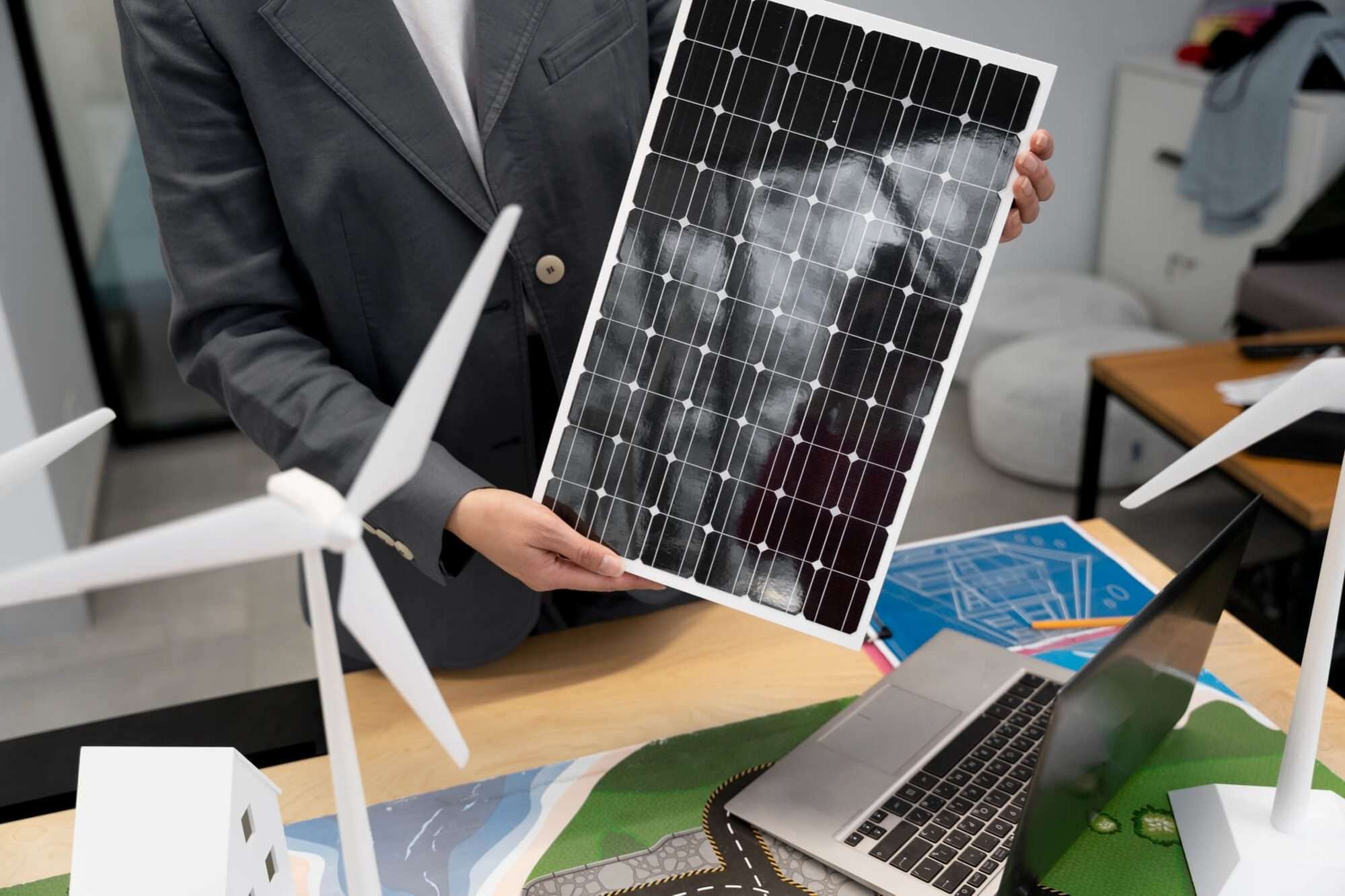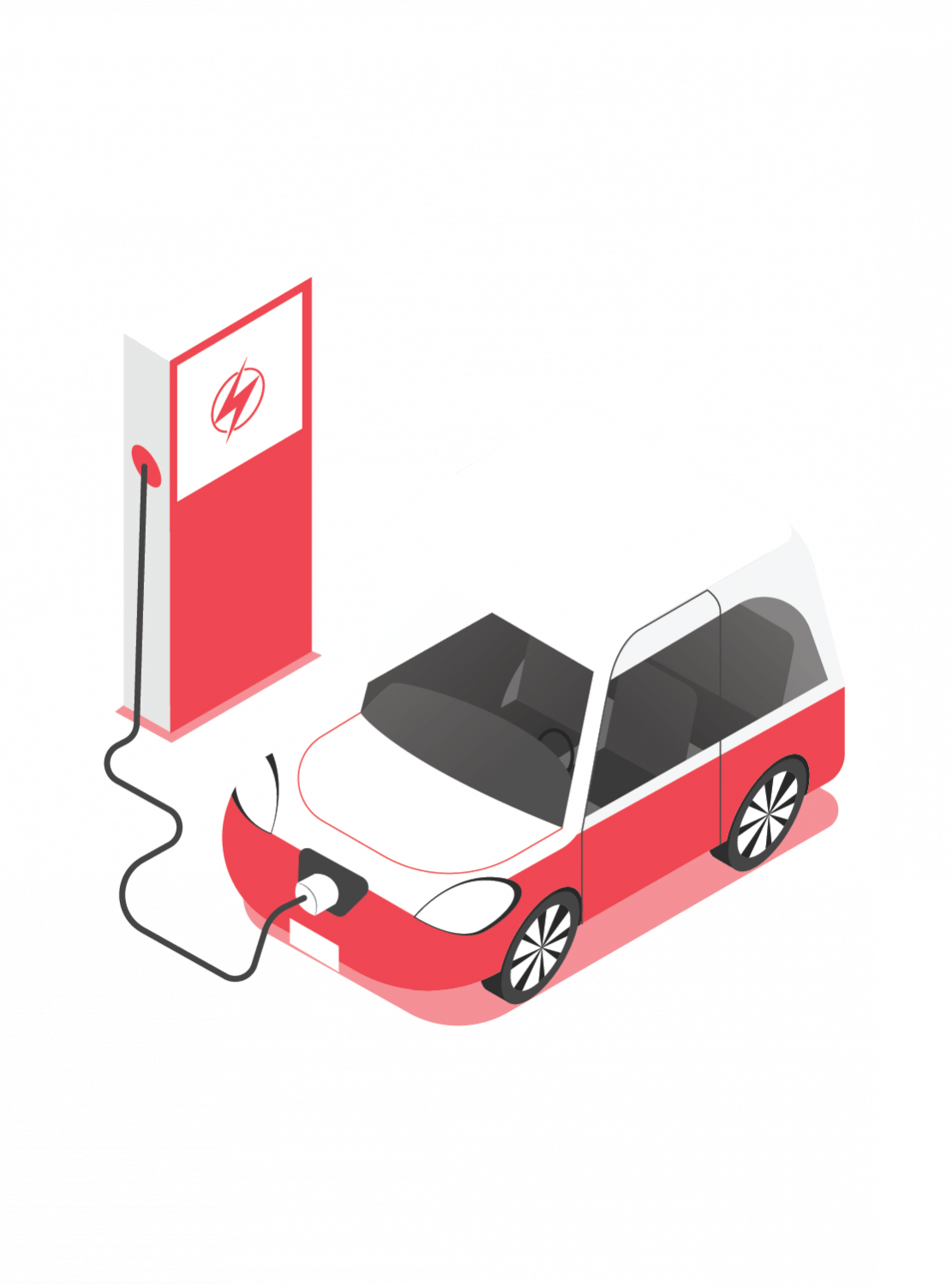Choosing the Right Solar Panel Setup for Your EV
Solar panels are a great way to generate clean, renewable energy and reduce your carbon footprint. With the growing popularity of electric vehicles (EVs), many people wonder if it’s possible to install a solar panel on an EV to reduce their reliance on fossil fuels further. In this article, we discussed Solar Panel is Installed on an EV: Discover the factors to consider and the necessary steps to take for a successful solar-powered EV setup.
If you are curious about this topic, you are in the right place to come to this article; we have in detail how Can a Solar Panel be Installed on An EV. Its features, limitations, and how to work; we discuss all the details to fulfill your adopting Solar panel for your EV charging.
Related: EV Charging Using Solar-Wind Energy


Can a solar panel be installed on an EV?
The short answer is “Yes”. Installing a solar panel on an EV is possible. Many people have already done it and have seen great results. However, it would help if you considered a few things before proceeding with this project.
First, it’s important to understand that solar panels are not a replacement for charging your EV. They can supplement your charging needs but will need help fully charging your vehicle. Therefore, it’s important to have a backup charging option, such as a wall charger, in case the solar panel is not producing enough power.
The Basics of solar panels on EVs
Solar panels on electric vehicles (EVs) are used to generate electricity for charging the vehicle’s battery. They are typically installed on the vehicle’s roof, hood, or trunk.
They are connected to the vehicle’s electrical system. When the vehicle is parked, the solar panels can generate electricity from sunlight and charge the battery, allowing the vehicle to drive on solar power alone.
Several solar panels can be used on EVs, including monocrystalline, polycrystalline, and thin film.
- Monocrystalline panels are made from a single silicon crystal and are typically the most efficient at converting sunlight into electricity.
- Polycrystalline panels are made from multiple silicon crystals and are less efficient but less expensive.
- Thin-film panels are made from a thin layer of photovoltaic material. They are the least efficient but also the least expensive.
Free Course: Design, Manufacturing & Testing of Electric Solar Vehicle
How Solar Panels Work and how they can supplement EV charging
Solar panels convert sunlight into electricity, also known as photovoltaic (PV). They are made up of photovoltaic cells, which are made of silicon and other materials that are sensitive to light. When sunlight hits the cells, it causes the electrons within the cells to become excited and move around. This movement of electrons generates an electrical current, which can be harnessed and used to power homes and businesses.
Solar panels are typically mounted on rooftops or on the ground. They are angled to face the sun to maximize the amount of sunlight they receive.
One way solar panels can supplement electric vehicle (EV) charging is by installing a solar panel system at home and using it to charge the EV. Panels can reduce the electricity the EV needs to draw from the grid, potentially lowering the owner’s electricity bills.
Read More: How Can We Reduce The Charging Time of Electric Cars?
In addition to helping reduce reliance on the grid and lowering energy costs, using solar panels to charge EVs can also help reduce greenhouse gas emissions. Solar panels do not produce emissions when generating electricity, making them a clean and renewable energy source.
Overall, solar panels are an effective and environmentally friendly way to generate electricity and can be a useful tool for supplementing EV charging. By using solar panels to charge EVs, individuals and businesses can reduce their reliance on the grid and lower their energy costs while also helping to protect the environment.


The size and location of solar panels on EVs
Solar panels on EVs are typically small in size and usually located on the vehicle’s exterior. They are usually mounted on the roof or the hood of the vehicle. They are designed to be as unobtrusive as possible while still being able to capture enough sunlight to generate a significant amount of electricity.
The size and location of the solar panels on an EV will depend on the vehicle’s specific model and the panels’ design. Some EVs may have larger solar panels that are more prominently displayed.
Others may have smaller panels more discreetly integrated into the vehicle’s design. Regardless of the size and location of the solar panels, they play an important role in helping to power the vehicle and reduce reliance on traditional fossil fuels.
Get to Know About Specialization Program In EV Technology
Pros and Cons of Solar Panels on EVs
There are pros and cons to using solar panels on electric vehicles (EVs). Some of the potential benefits of solar panels on EVs include the following:
- Increased range: Solar panels can extend the range of an EV by providing a source of power to recharge the battery.
- Reduced reliance on fossil fuels: Solar panels can reduce an EV’s reliance on fossil fuels, making it a more environmentally friendly transportation option.
- Reduced charging costs: Solar panels can reduce the cost of charging an EV, as they provide a free source of electricity.
However, there are also some potential drawbacks to using solar panels on EVs:
- Limited efficiency: Solar panels may not provide enough power to fully charge an EV’s battery, particularly in cloudy or overcast conditions.
- High initial cost: Solar panels can be expensive to install and may require a significant upfront investment.
- Limited space: Solar panels may only be practical on some EVs, particularly smaller models with limited roof space.
Overall, using solar panels on EVs can be a useful way to extend the range and reduce reliance on fossil fuels. Still, it is important to carefully consider the potential drawbacks before deciding.
Get to Know About PMC Courses In EV Technology:


Cost and Installation Process Solar Panels on EVs
The cost of installing solar panels on an electric vehicle (EV) can vary significantly depending on several factors, including the size and type of solar panel, the installation’s location, and the installation process’s complexity.
You can generally pay several thousand dollars for a solar panel installation on an EV. However, costs can range from a few hundred to tens of thousands.
The installation process for solar panels on an EV generally involves the following steps:
- Measure and prepare the installation area: The first step is to measure the available space on the roof of the EV and prepare the area for installation. This may involve cleaning the roof and ensuring it is flat and free of debris or obstructions.
- Install the mounting brackets: The next step is to install the mounting brackets that will hold the solar panel in place.
- Attach the solar panel: Once the mounting brackets are in place, the solar panel can be attached to them. This is typically done by screwing the panel into the brackets or using a mounting adhesive.
- Connect the wiring: The final step is to connect the wiring from the solar panel to the battery or charging system of the EV. This may involve running wires from the solar panel to the EV’s battery compartment or charging port.
Overall, installing solar panels on an EV can be a complex and time-consuming process that requires specialized knowledge and equipment. It is generally recommended to have the installation performed by a professional with experience.
Or Learn From Our Fundamental EV Course: Solar Vehicle Design and Development
Conclusion (Final Words)
In conclusion, we discussed in this article can install a solar panel on an electric vehicle (EV). Solar panels can extend the range of an EV by providing a source of power to recharge the battery and reduce reliance on fossil fuels. However, several limitations and challenges to using solar panels on EVs exist.
These include limited efficiency, limited space, high initial cost, limited durability, limited charging speed, and limited availability. The installation process can also be complex and time-consuming, requiring specialized knowledge and equipment.
Overall, while solar panels can be a useful addition to an EV, it is important to consider the potential drawbacks and limitations before deciding.
New technologies emerge throughout the day, so it’s essential to constantly upskill with the most recent developments if you want to stay ahead in this fascinating field.





